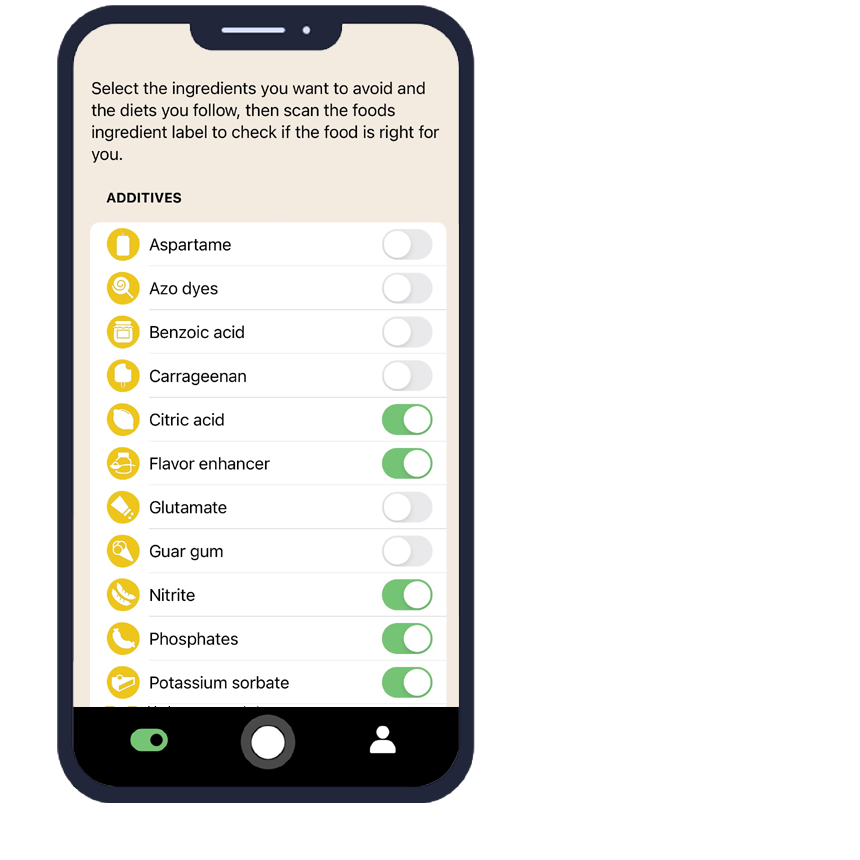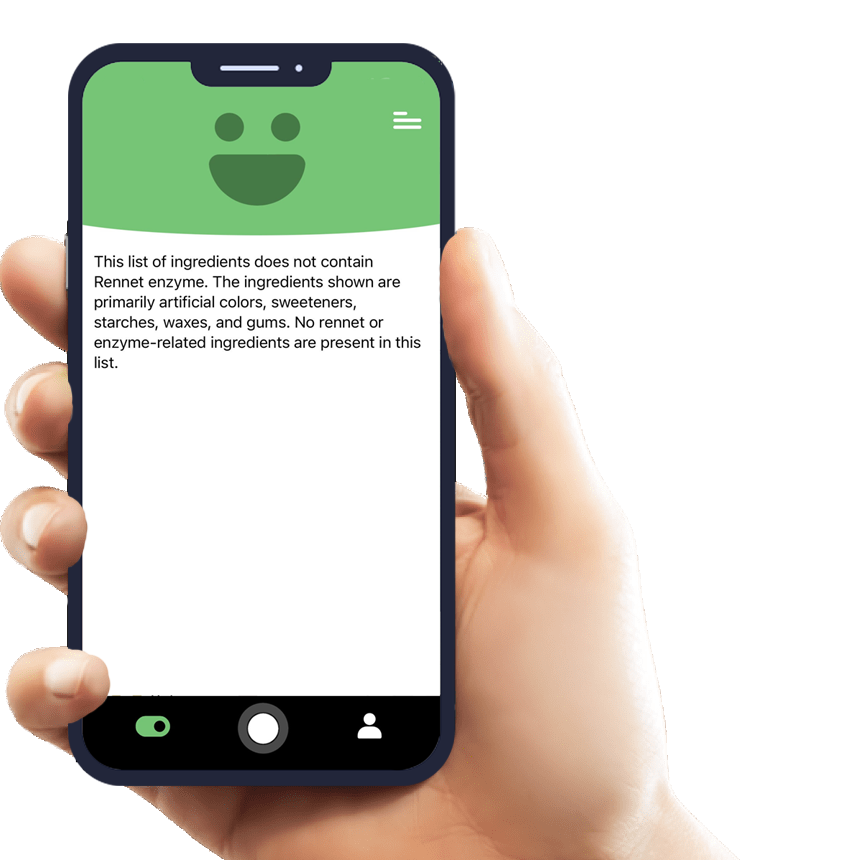Everything You Need to Know About Citric Acid and How AI Eat This Can Help
Citric acid is one of the most common food additives found in countless products on grocery store shelves. Whether you're managing dietary restrictions, dealing with food sensitivities, or simply want to make informed choices about what you eat, understanding citric acid is essential. This naturally occurring compound can be challenging to identify across different food labels and languages.
For health-conscious consumers, the AI Eat This app offers a revolutionary solution. By scanning ingredient lists in any language, this innovative tool helps you quickly identify citric acid and other food additives, making it easier than ever to maintain your preferred diet and avoid unwanted ingredients.
What Is Citric Acid and Where Is It Used?
Citric acid is a weak organic acid that occurs naturally in citrus fruits like lemons, limes, and oranges. In the food industry, it's primarily produced through fermentation and serves multiple purposes as a food additive. The compound is officially recognized with the E number E330 in European food labeling systems.
As a versatile food additive, citric acid functions as a preservative, flavor enhancer, and pH regulator. It helps extend shelf life by preventing bacterial growth and maintains the fresh taste of processed foods. The acid also acts as an antioxidant, preventing the oxidation that can cause foods to spoil or change color.
Common Foods Containing Citric Acid
You'll find citric acid in an extensive range of food products, making it nearly impossible to avoid without careful label reading. Here are the most common sources:
- Soft drinks, energy drinks, and flavored beverages
- Candies, gummies, and sour confections
- Canned fruits and vegetables
- Processed meats and seafood
- Dairy products like cheese and yogurt
- Frozen foods and ready-made meals
- Salad dressings and condiments
- Baked goods and dessert mixes
Is Citric Acid Safe? What Does the Research Say?
Regulatory Approvals and Guidelines
Major health authorities worldwide have extensively studied citric acid safety. The U.S. Food and Drug Administration (FDA) classifies citric acid as "Generally Recognized as Safe" (GRAS) for use in food products. Similarly, the European Food Safety Authority (EFSA) has approved its use without establishing specific daily intake limits.
The World Health Organization (WHO) has also evaluated citric acid and found no evidence of adverse health effects when consumed in typical dietary amounts. These regulatory approvals are based on decades of research and consumption data from millions of people worldwide.
Potential Risks for Specific Groups
While citric acid is generally safe for most people, certain individuals may experience sensitivity or intolerance. Some people report digestive discomfort, including stomach upset or acid reflux, when consuming large amounts of citric acid. Those with existing gastrointestinal conditions may be more susceptible to these effects.
True citric acid allergies are extremely rare, but citric acid intolerance can occur. Symptoms may include headaches, skin irritation, or digestive issues. People following specific dietary restrictions for medical or personal reasons may also choose to limit their citric acid intake.
How AI Eat This Helps You Avoid Citric Acid
Managing dietary restrictions becomes significantly easier with the AI Eat This mobile app. This innovative tool uses advanced artificial intelligence to scan and analyze ingredient lists from food packaging in real-time. Simply point your phone's camera at any product label, and the app instantly identifies citric acid along with hundreds of other food additives.
The app's personalized filter system allows you to set specific dietary preferences and restrictions. Once you've indicated that you want to avoid citric acid, the app will immediately alert you when scanning products that contain this additive. This feature is particularly valuable when shopping for groceries or dining out, as it eliminates the guesswork from food choices.
What makes AI Eat This especially powerful is its multilingual capability. Whether you're traveling abroad or shopping for imported products with foreign labels, the app can identify citric acid regardless of the language used on the packaging. This global functionality ensures consistent dietary management wherever you are.
Who Should Consider Avoiding Citric Acid?
Several groups of people may benefit from limiting or avoiding citric acid in their diet. Individuals with citric acid intolerance often experience digestive discomfort, making it necessary to carefully monitor their intake. People with sensitive stomachs or gastroesophageal reflux disease (GERD) may find that reducing citric acid consumption helps manage their symptoms.
Those following specific dietary protocols, such as certain elimination diets or medical nutrition therapies, might need to restrict citric acid temporarily or permanently. Some individuals prefer to minimize processed food additives as part of a clean eating approach, viewing citric acid avoidance as part of their overall health strategy.
Parents managing children's dietary restrictions also benefit from citric acid identification tools. Young children may be more sensitive to food additives, and careful ingredient monitoring helps ensure their comfort and well-being.
Tips for Maintaining a Citric Acid-Free Diet
Successfully avoiding citric acid requires a combination of knowledge, planning, and the right tools. Start by familiarizing yourself with citric acid's various names on ingredient labels, including its E330 designation and terms like "natural flavor" that might mask its presence.
Focus on whole, unprocessed foods whenever possible. Fresh fruits, vegetables, meats, and grains naturally contain minimal or no added citric acid. When you do purchase packaged foods, prioritize products with shorter ingredient lists, as these typically contain fewer additives overall.
Meal planning and home cooking give you complete control over ingredients. Preparing meals from scratch eliminates uncertainty about hidden food additives while often providing better nutrition and flavor. When dining out, don't hesitate to ask restaurant staff about ingredients and preparation methods.
The most effective strategy combines these traditional approaches with modern technology. Using the AI Eat This app transforms label reading from a time-consuming chore into a quick, reliable process that fits seamlessly into your shopping routine.
Conclusion
Understanding citric acid and its widespread use in food products empowers you to make informed dietary choices. While this food additive is generally safe for most people, those with specific sensitivities or dietary restrictions need reliable ways to identify and avoid it. The AI Eat This app bridges the gap between complex food labeling and practical dietary management.
Whether you're dealing with citric acid intolerance, following medical dietary restrictions, or simply prefer to minimize food additives, having the right tools makes all the difference. Take control of your food choices and discover how much easier healthy eating can be. Download AI Eat This for free testing today and experience the future of personalized nutrition management!

70 filters
With over 70 filters, you can easily avoid certain ingredients and follow your dietary preference.

Paleo

Pescetarian

Ultra-processed food

Vegan







































































